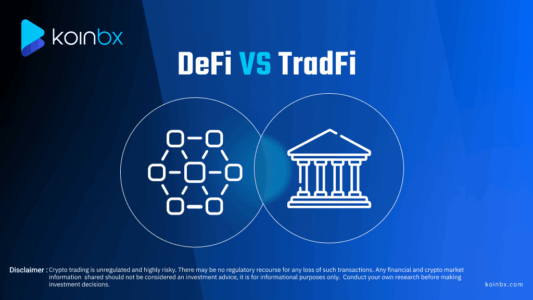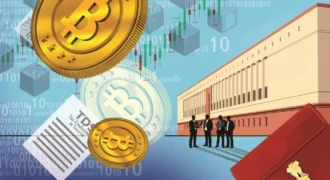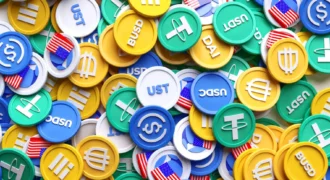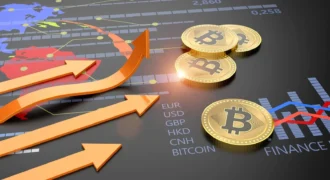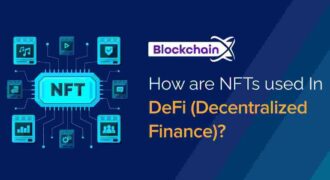The world of finance is undergoing a transformation. For centuries, traditional financial institutions—banks, brokerages, and payment processors—have acted as gatekeepers, controlling access to money, credit, and investment opportunities. But in recent years, Decentralized Finance (DeFi) has emerged as a disruptive force, promising to redefine how we interact with money, assets, and financial services.
DeFi isn’t just a trend; it’s a movement that leverages blockchain technology, smart contracts, and decentralized networks to create financial systems that are more transparent, accessible, and efficient. But how exactly does DeFi differ from traditional finance, and what implications does it hold for the future of money?
Understanding Traditional Finance
Traditional finance (TradFi) is built on centralized systems. Banks, investment firms, and payment networks act as intermediaries, verifying transactions, maintaining ledgers, and controlling access to financial services.
Key features of traditional finance include:
- Centralized control: Institutions manage accounts, enforce policies, and regulate transactions.
- Regulatory oversight: Governments and financial authorities ensure compliance with laws and safeguard assets.
- Physical infrastructure: Bank branches, ATMs, and centralized servers underpin operations.
- Limited accessibility: Entry barriers exist for unbanked populations, cross-border payments are slow, and fees can be high.
While traditional finance is stable, secure, and widely trusted, it also suffers from inefficiencies, bureaucracy, and exclusion. High fees, slow settlement times, and limited global accessibility have left room for innovative alternatives.
What is Decentralized Finance (DeFi)?
DeFi represents the financial ecosystem built on blockchain technology, where transactions occur directly between users without intermediaries. Smart contracts—self-executing programs coded on blockchains—automate processes like lending, borrowing, trading, and yield generation.
Key characteristics of DeFi include:
- Decentralization: No central authority controls funds or transactions. Users retain ownership of their assets.
- Transparency: Transactions are recorded on public ledgers, enabling visibility and auditability.
- Global Accessibility: Anyone with an internet connection and crypto wallet can participate.
- Programmable Finance: Smart contracts allow for automated lending, staking, trading, and liquidity provision.
DeFi platforms like Uniswap, Aave, Compound, and MakerDAO have demonstrated how decentralized networks can replicate traditional financial services while offering greater accessibility, speed, and efficiency.
Key Differences Between DeFi and Traditional Finance
| Feature | Traditional Finance | DeFi |
|---|---|---|
| Intermediaries | Banks, brokers, payment processors | None; smart contracts handle transactions |
| Accessibility | Limited by geography, credit history | Global, anyone with crypto can access |
| Transparency | Internal ledgers; limited public visibility | Public blockchain records; fully auditable |
| Speed | Days for cross-border payments, clearing, settlements | Seconds to minutes, depending on blockchain |
| Fees | Often high due to middlemen | Lower transaction fees, but dependent on network congestion |
| Control | Institutions control funds and decisions | Users retain full control over assets |
| Innovation | Slow; regulated environments | Rapid development, experimental financial products |
These differences illustrate why DeFi is often called “finance without borders”, offering solutions to inefficiencies that have long plagued traditional systems.
How DeFi is Changing Money
- Banking Without Banks
DeFi enables peer-to-peer lending and borrowing. Platforms like Aave and Compound allow users to earn interest or take loans without visiting a bank. This democratizes access to credit, especially in regions underserved by traditional banking. - Instant and Borderless Payments
Blockchain-based transfers can occur across countries in minutes, compared to traditional banking systems where cross-border transfers may take days and incur high fees. - Yield Farming and Staking
DeFi introduces new ways to earn passive income. Investors can provide liquidity to decentralized exchanges, stake tokens, or participate in protocol governance, earning returns that often surpass traditional savings or fixed-income options. - Tokenization of Assets
Physical and digital assets can be tokenized, enabling fractional ownership. Real estate, art, and commodities can now be traded on-chain, increasing liquidity and opening investment opportunities previously limited to institutional players. - Transparent Governance
DeFi protocols often implement decentralized governance, allowing token holders to vote on proposals, fees, and upgrades. This empowers users rather than concentrating decision-making in a few executives.
Risks and Challenges in DeFi
While DeFi offers numerous advantages, it also comes with unique risks that differ from traditional finance:
- Smart Contract Vulnerabilities: Bugs or exploits in code can lead to significant losses.
- Regulatory Uncertainty: Governments are still defining frameworks for DeFi, creating potential compliance risks.
- Market Volatility: Crypto markets are highly volatile, impacting DeFi investments and collateralized loans.
- User Responsibility: Unlike banks, DeFi platforms do not offer insurance or custodial protection; users are responsible for managing private keys and assets.
Investors must weigh high rewards against elevated risks, employing strategies like diversification, due diligence, and using reputable protocols.
The Convergence of DeFi and Traditional Finance
Interestingly, the lines between DeFi and TradFi are beginning to blur. Major banks, fintechs, and payment providers are exploring blockchain integration, tokenized assets, and decentralized lending platforms.
Some trends include:
- Central Bank Digital Currencies (CBDCs): Combining regulatory oversight with blockchain-based innovation.
- Hybrid Models: Traditional institutions offering DeFi-inspired products like crypto lending, staking, and tokenized securities.
- Institutional Adoption: Large investors participating in DeFi liquidity pools, bridging the gap between mainstream finance and decentralized protocols.
This convergence suggests that DeFi is not just a replacement for traditional finance, but also an evolutionary complement, bringing efficiency, inclusivity, and innovation to global financial systems.
Why DeFi Matters for the Future of Money
DeFi represents a paradigm shift:
- Empowering Individuals: People have control over their money, reducing dependence on centralized intermediaries.
- Financial Inclusion: DeFi opens access to credit, savings, and investment opportunities for the unbanked or underbanked.
- Innovation Acceleration: Rapid experimentation allows the creation of new financial products and services.
- Transparency and Trust: Public blockchains provide auditable and verifiable transactions, fostering confidence.
In essence, DeFi challenges the status quo of money and financial governance, making financial services more accessible, transparent, and programmable.
Conclusion
The debate between DeFi and traditional finance is not merely about technology—it’s about reimagining how money works. Traditional finance offers security, stability, and regulatory oversight, but often at the cost of efficiency, accessibility, and innovation. DeFi, on the other hand, provides borderless, transparent, and programmable financial services, powered by community participation and blockchain technology.
As DeFi continues to mature, the future of money may not be a choice between one or the other. Instead, we are likely to see a hybrid financial ecosystem, where decentralized innovation complements traditional structures, offering a more inclusive, efficient, and resilient global financial system.
For investors, tech enthusiasts, and everyday users alike, understanding DeFi isn’t optional—it’s essential. The financial landscape is evolving, and those who grasp the implications of decentralized finance will be best positioned to thrive in the next era of money.

